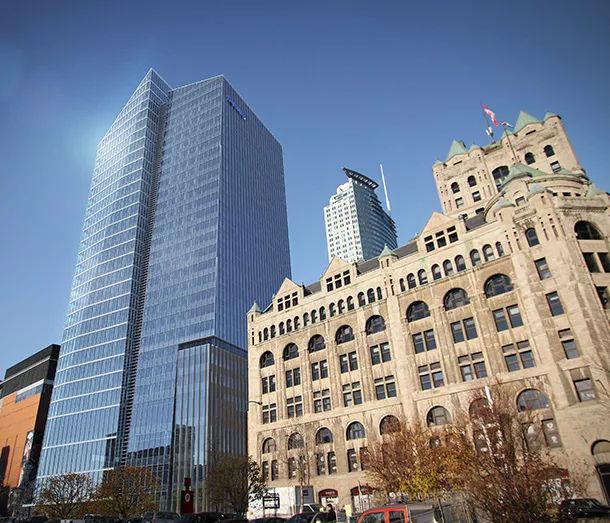The Beginning
Our story began over 50 years ago as a small construction company that started with three friends. Today we are wholly owned and operated by the Number 1 performing pension fund in Canada, the Ontario Teachers’ Pension Plan. We are very proud of where we come from and extremely excited about where we are heading. Read on to gain a better understanding of our history… While meeting over dinner one evening, a minor argument developed among three friends — Eph Diamond, Joseph Berman and Jack Kamin — over what to name their new venture. The name was decided when Jack Kamin went outside that same evening and got into his car — a Cadillac. They all decided that would be a good name, although it got them into a fight with General Motors, producer of the Cadillac automobile. The illustrious trio said the name was in the public domain because it belonged to the French explorer who founded the city of Detroit. Subsequently, the partners came to an agreement with General Motors, which registered the trade name, prohibiting the use of the Cadillac name by anybody else.
1953
1953
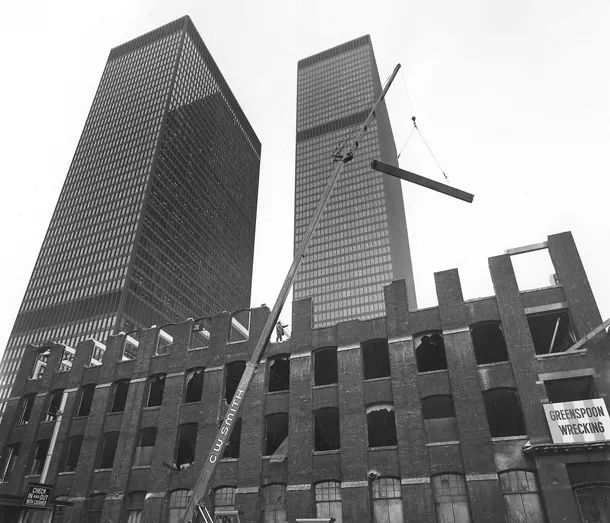
In 1953, the partners opened the doors to the Cadillac Development Corporation Limited. It was perfect timing, as they found themselves right in the middle of the post-war baby boom. The demand for new housing was tremendous and the company quickly set to work developing high-rise apartment buildings in Guelph, Ontario. Innovation became their trademark, as the company revolutionized the design of apartment buildings. Features that are taken for granted now, such as health club facilities, individually controlled heating and air conditioning, underground parking and grounds landscaped with trees and fountains, were pioneered by Cadillac Development.
1960s
In the early 1960s, another company was busy building a reputation in the Canadian real estate industry. The Fairview Corporation was established as a division of Cemp Investments Ltd., the holding company for the Bronfman family, one of Canada’s most successful business dynasties.
Fairview and the Toronto Dominion Bank joined forces with the goal of building the largest office complex in the country. Mies van der Rhoe, an internationally renowned architect, was chosen to design the landmark project, the Toronto Dominion Centre. The original concept called for a 1-million-square-foot office tower, which eventually expanded to include multiple towers totaling over 4 million square feet.
The trendsetting complex set new standards in the design of skyscrapers, with innovative features such as an underground shopping concourse, tinted glass and high-speed elevators. Over the years, the principals from Cadillac and Fairview occasionally came into contact when Cadillac built shopping centres for Fairview. In 1968 they joined forces to purchase Canadian Equity and Development Co., a firm that owned 80,000 acres outside of Toronto in an area known as Erin Mills. Cadillac was interested in Erin Mills because it offered a huge area in which to build houses. Fairview was interested because the community would need shopping centres. Although the land was initially purchased in 1954, the Erin Mills development was at a standstill because no municipal services had been installed. Conflicts arose over the development of Erin Mills as both Cadillac and Fairview began to expand their areas of operation, so the two companies sought a solution.
1974
In the spring of 1974, two of the most dynamic forces in the Canadian real estate industry agreed to merge. A quick flip of a coin positioned the Cadillac name before Fairview, and a new real estate powerhouse was born.
Cadillac Fairview continued its successful association with the Toronto Dominion Bank and, along with a new partner, the T. Eaton Company, launched two other landmark projects: Vancouver’s Pacific Centre (opened in phases starting in 1971) and the Toronto Eaton Centre (opened in phases starting in 1977). They had now become the “Cadillac” of real estate!
In 1975, Cadillac Fairview entered the U.S. real estate market. At one time Cadillac had also scouted opportunities in Brazil, Hong Kong and Europe, but decided against going ahead because of the diffi culties inherent in running such far-flung operations.
1980's
During the recession of the early 1980s, interest rates skyrocketed and revenue from income-producing properties across the industry was negatively impacted. At Cadillac Fairview, a strategic decision was made to sell the Land and Housing division over the period from March 1982 to March 1985. By the end of 1986, the Bronfman family decided to sell their interest in Cadillac Fairview. At the same time, a former Cadillac Fairview executive organized an investor group to purchase the U.S. office portfolio. On November 2, 1987, a consortium of 39 mostly U.S. institutional investors, which had been put together by the Chicago-based real estate developer JMB Realty Corp., purchased all of the outstanding shares of CF for about $2.6 billion.
1995
In July 1995, under a restructuring plan, a total of $832 million in additional capital was injected from a new group of investors into the company. The new investor group recruited a new CEO, Bruce Duncan, in December 1995 and he put together a new management team. On November 6, 1997, an initial public offering raised an additional $304 million (CAD), completing one of Canada’s most successful corporate turn-arounds. The CF executive team decided the best way to turn the weakened company around was to become the real estate investment vehicle of choice for investors and the dominant retail franchise in Canada. As a result, from 1996 forward, management efforts were focused on growing the corporation, through selected developments and acquisitions, to either complement or strengthen existing dominance in current markets or to enter and dominate new markets. The strategy proved successful, and in late September 1999 (only four years after emerging from a major financial restructuring) it was announced that a newly robust Cadillac Fairview — owner of landmark properties like the Toronto-Dominion Centre, Vancouver’s Pacific Centre and The Toronto Eaton Centre — was going up for sale.
1999
By December 1999, the new Cadillac Fairview was on its way to becoming a wholly owned subsidiary of the Ontario Teachers’ Pension Plan Board, whose relationship with CF went back to 1995. When CF was publicly traded, Teachers’ was the largest shareholder, holding approximately 21.8% of the outstanding common shares. Teachers’, with over $68 billion in assets, saw the acquisition of Cadillac Fairview as an excellent opportunity to attain a desired level of allocation in the real estate sector while providing a good level of return.
2010-2020
2010-2020
La dernière décennie marqua une importante période d’activités de réaménagement du portefeuille d’actifs de CF. Anticipant l’évolution des demandes des consommateurs et des clients et la nécessité de maintenir sa position de chef de file, CF investit des milliards de dollars dans la revitalisation d’un vaste ensemble de propriétés partout au Canada. Une série de rénovations majeures commença avec l’emblématique CF Toronto Eaton Centre de Toronto, établissant la nouvelle référence de l’industrie pour la création d’une expérience de magasinage unique grâce à des améliorations intérieures et à de nouveaux équipements publics, tout en introduisant une variété d’options de restauration haut de gamme. CF lança par la suite des projets de renouvellement dans les grands centres commerciaux urbains de partout au Canada. Les immeubles de bureaux commerciaux de l’entreprise bénéficièrent également de réinvestissements de plusieurs millions de dollars pour la modernisation du design intérieur et extérieur et des technologies environnementales de pointe. Au cours de cette décennie de réinvestissement, CF atteignit son objectif et promit de créer une expérience haut de gamme pour les occupants, les clients et les consommateurs sans compromettre son engagement en matière de responsabilité sociale et de développement durable.


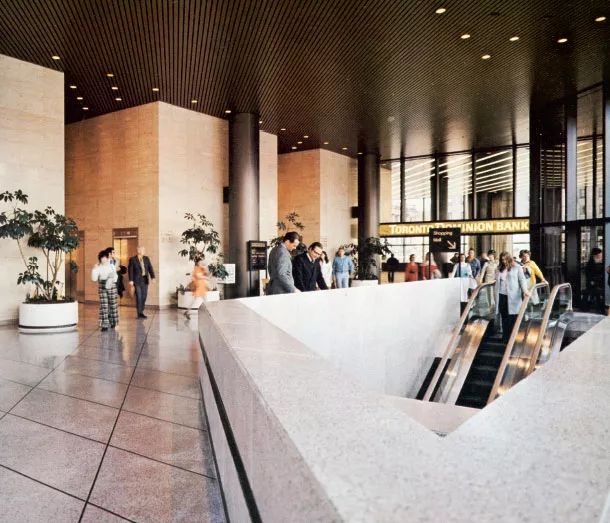
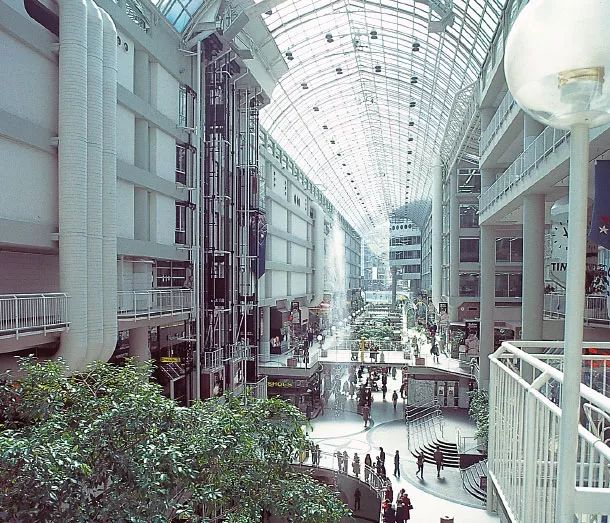
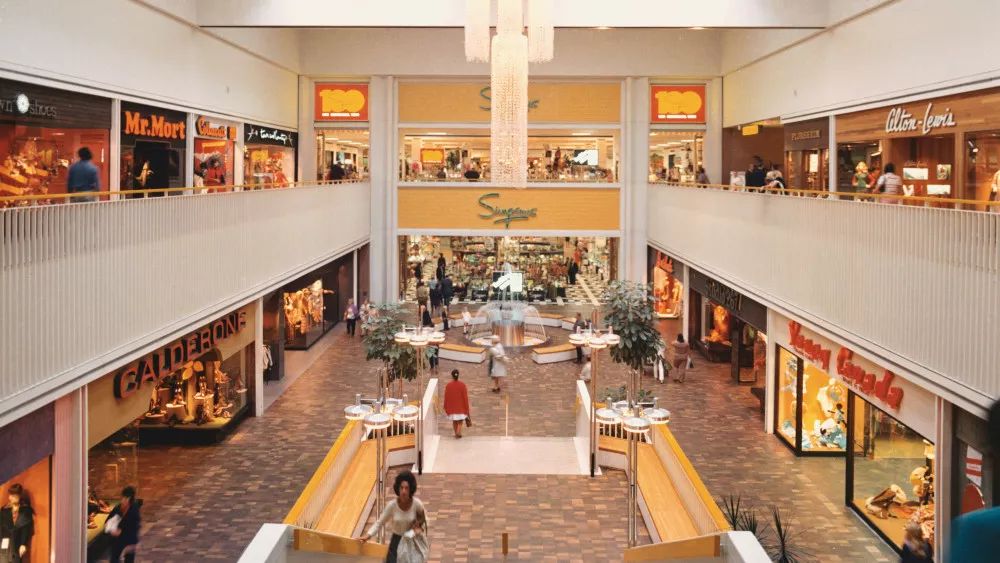
![[CF Welcome] CF IPO](https://assets.cadillacfairview.com/transform/dbefd2b6-98a5-431b-b87d-356eeed505da/Cadillac-Fairview-IPO?quality=80)
